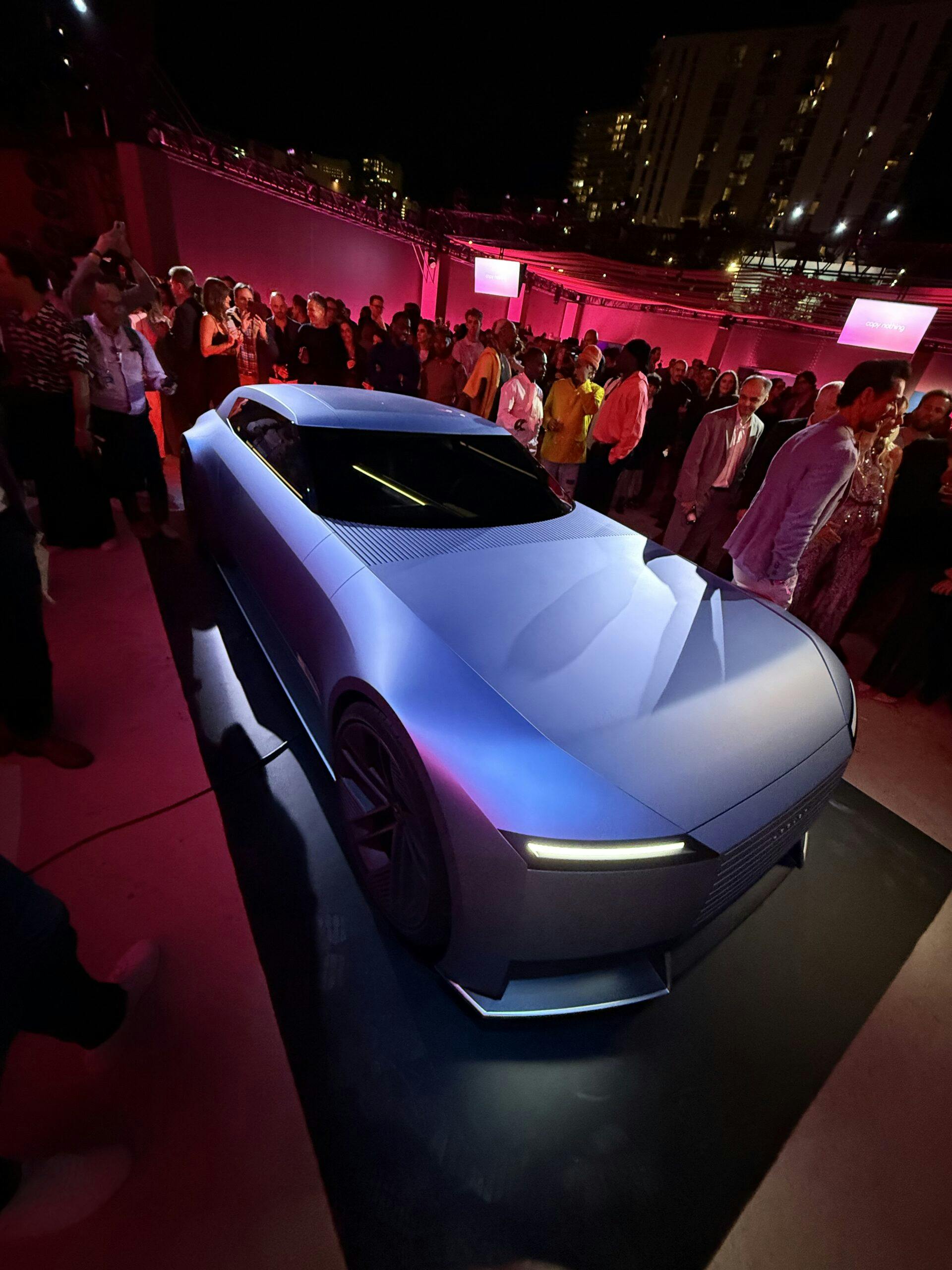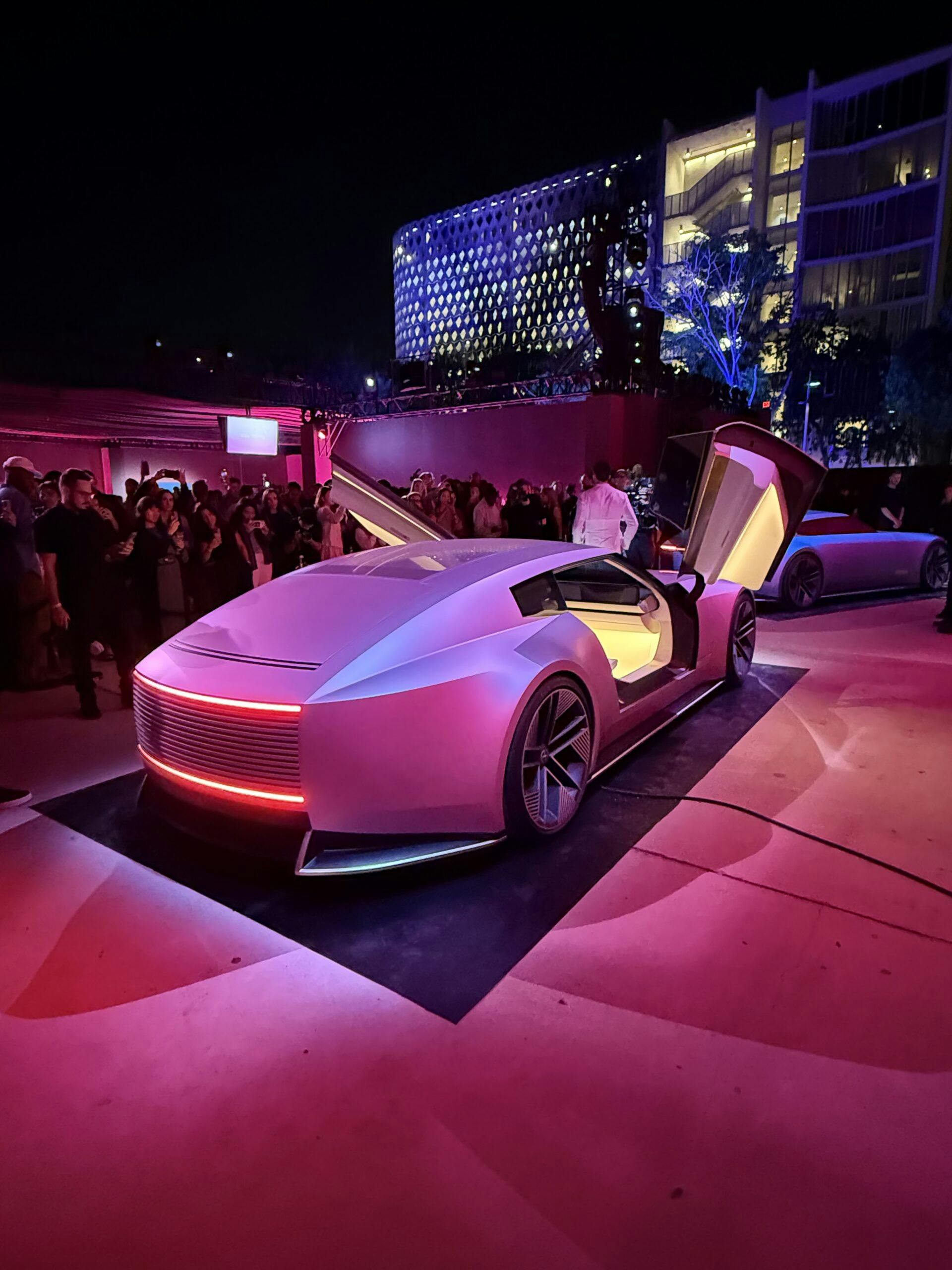Jaguar Execs: We Return to Our Roots by Ignoring Them
Jaguar sparked controversy over the last few weeks ahead of the Miami reveal of its new design direction, one that will see the automaker discard much of what is familiar to its car buyers and brand enthusiasts, including its internal combustion engines.
As inventories of Jaguar’s existing products draw down, the automaker is relaunching using battery-electric drivelines exclusively. Such a momentous change called for a rethink of the brand’s design approach, one that had become mired in what had come before. The surprise that buyers felt upon seeing the first XK 120, E-Type, XJ6, or XJS was gone. The result was a tumultuous sales slide. In 2003, Jaguar sold nearly 55,000 cars in the U.S. Two decades later, it struggled to sell 8200.
This is what drove Jaguar to re-establish the brand’s place in the luxury car market, starting with a design that broke from its strangulated recent past. Under the stewardship of Gerry McGovern, chief creative officer for Jaguar Land Rover, Jaguar is throwing off the heritage-based design language that company founder Sir William Lyons would not have approved of: Lyons thought nothing of discarding a current design language for a more modern one that owed little to what had come before.

“Jaguar has its roots in originality. In the past, it was known for its visionary, unique esthetic and groundbreaking designs,” said McGovern at the unveiling of the Type 00. “Think about the E-Type when it was first shown, and how it would have been perceived at that time. It was truly a copy of nothing.”
This is what led the team to design the Jaguar Type 00, its name a reference to the brand’s total reset.

“It was very much clear of what we wanted to do, something that very bold,” said Constantino Segui Gilabert, chief exterior designer for Jaguar. “Gerry was insisting on having something very progressive. So he gave us that freedom.”
Typically, without an engine in front, today’s designers are leaning toward cab-forward design, leading to a homogenous look to most EVs. But in a truly radical approach for a new electric vehicle, designers kept the classic long-hood, short-cabin proportions.
“We did not have much of an issue of having that classic proportions, because we actually thought that there was kind of like an unusual thing to do for [an] electric car,” Gilabert said. “We felt that that was quite an interesting approach for us.”




The Type 00’s front fascia, too, is a departure from the small frontal area most EVs seem to embrace. Regardless, both the front and rear fascias are “very close” to those on the four-door GT Jaguar plans to unveil in late 2025. That includes the tailgate design, one that lacks a rear window. Instead, side-mounted cameras deploy only when needed.
Yet the Type 00 has a holistic design, despite a design team some 800 strong.
“We were really keen from the beginning to have a design that really looked like it just came from one pair of pants. We really wanted this car to feel as one,” said Tom Holden, Jaguar’s chief interior designer. “And as those sketches were developing, you know, we’re working together, bouncing ideas off each other.”



This led to a unification of the exterior and interior by carrying what Jaguar calls the strikethrough, which is a field of parallel lines, from the hood into the cabin atop the instrument panel. It also led to some intriguing design touches, such as screens that fold down when you don’t want to look at them, leaving only a small readout with essential information at the base of the windshield. The strikethrough motif is also used on the front and rear fascias, and on the redesigned leaper ingot on each side of the car. Jaguar intends this to be a new styling hallmark.
The interior sports some unusual materials, including brass. The inspiration came from the redesign’s initial codename, Renaissance.

“We started looking at the original Renaissance, and we were finding a lot of references to brass within that,” said Mary Crisp, chief materiality designer at Jaguar. It’s a material that changes with time, celebrating its past as its patina changes.
“That really sparked an idea about automotive materials and why do we expect them to be the same from day one to 10 years later, said Crisp. “Why can’t things change over time?”
While you shouldn’t expect to see brass in the version sold to the public, Crisp says they are employing some unique solutions to interior finishes for the production car.




Altogether, the carmaker unveiled a machine that looks unlike any other Jaguar that has come before it, albeit one with a decidedly masculine appearance. One thinks that Sir William Lyons would have approved.
“It really goes back to this idea of how do you take that fearless creative spirit and reimagine it, transform it for a completely new audience, a new generation?” said Richard Stevens, Jaguar brand design director.
“If you think about our heyday, we never conformed, we never followed convention, but we never compromised on everything that we designed, from the exuberant proportions of a vehicle to the finest details. And for us, it goes back to this thing about context.”



Still No. This looks like some generic cheap toy car that is trying not to be detailed enough to be identified.
100%
Disclaimer: the following comments express the opinion of an aging, obsolete driver who still enjoys the experience of operating ICE cars with: a gearshift lever, 3 pedals, analog-dial gauges, and a round steering wheel. To me, there’s nothing like the dopamine rush of skillfully controlling a smooth, subtle 4-wheel drift, flirting with the edge of adhesion, while exiting a corner, impatiently powering to enter the very next corner, just to repeat the the feat.
Admittedly, this team did manage to express an avant-garde aesthetic of uniqueness, but (hyperbolically unlike the SS100, XK120, XK-E), at the expense of any hint of primal desirability.
Similar to the underachieving Cybertruck design (apologies to Elon), it’s much too heartless, featureless, cold, and stark; evoking nonexistent passions typically reserved for household appliances.
“Copy of nothing”? That alone isn’t always an aspiring goal. In fact, at a distance, it vaguely resembles a compilation of countless generic, bland, amorphous, “futuristic” transportation fantasies imagined over the past several decades.
800 people were part of the design team for this rolling pile? That seems to be abut 800 people too many. It doesn’t look good at all. I hope that front end is a frunk because there is no room for junk in that trunk.
Not much to see here that you couldn’t imagine from the previous (yesterdays) release of the 00 concept. Those very simple two dimensional glimpses of what’s to come may have been a way of not sucking all the air out of the room before these concepts were shown to the public. As Mikey said very “cold and stark” and may I add antiseptic. Done in matte black they’d look like Darth Vaders ride in whatever Star Wars number they’re up to now. But it is just a concept car showing the direction they’re heading. A roughed out piece of clay perhaps. With further refinement who knows what we might see. Not to mention the tendency for concepts to become watered down by the time they reach production. This may be an example of ” The only thing worse than bad publicity is no publicity “. Love it or hate it people are talking. We should know more when the new I- type hits the showroom.
LOng time lover of Jaguar here. These guys are clueless. Brand will disappear inside of two years.